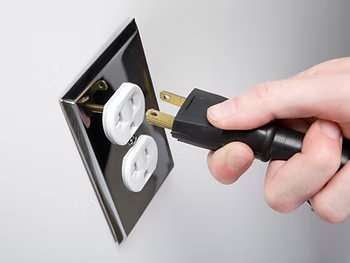Rechargeable Batteries: Are They Worth It?
- Smart Choices
- Mar 16, 2022
- 3 min read

If you cringe every time you have to swap out 4, 6 or 8 disposable batteries in a toy or flashlight, you may have already decided to switch to rechargeables to avoid the hassle of searching through cabinets for new disposables. If you are still considering what to do, read on for the pros and cons of rechargeable batteries.
Pros for choosing rechargeables
You probably are already using rechargeable batteries in electronics such as smartphones and tablets so you are familiar with how they work.
Rechargeable batteries almost always last longer, cost less in the long term and reduce waste compared with single-use batteries and when used in high-demand devices. That’s because many of them continue to work until being charged up to 500 times (2 to 5 years), offering hundreds of hours more use than disposables.
Rechargeables perform better and hold a charge longer than in years past (you have probably already noticed this as you have upgraded your phone/tablet through the past few years). Rechargeable batteries for other products have improved, too. They also often last longer on a charge than single-use batteries.
They perform better, providing peak performance when used. Rechargeables are rated at 1.2 volts while in use vs. disposables that begin at 1.5 volts, so it may seem as if disposables are more powerful. However, many rechargeables stay near their rated voltage (even at a high current draw) until they are drained. Only for a few low-drain applications can a disposable alkaline battery truly supply higher voltage, and then only when the battery is fairly fresh. The voltage of disposables steadily drops until drained. When current draw is high, the voltage of disposables can drop very quickly.
Because they are available in common sizes (AAA, AA, C, D, 9v) you can purchase them for most common uses.
By using rechargeable batteries, you are keeping toxic materials out of the landfill. Disposable batteries contain manganese, nickel and steel and add volume to landfills.
Cons of going with rechargeables
You’ll need a charging unit to keep the batteries charged; if one doesn’t come with your battery pack, you’ll need to purchase one separately. Notes: Use only a charger specified for the type and size of your batteries, don’t leave batteries in the charger for more than 24 hours at a time and don't mix rechargeable battery types in the same charger.
If re-charged batteries aren’t used frequently, they may lose their charge while sitting on a shelf for a few months. This makes it important that they stay charged and used. More expensive, low self-discharging rechargeable batteries are available that can last for up to a year in storage. Disposable batteries are best for emergency-preparedness kits because they can last up to a decade on the shelf without draining.
Because disposables self-discharge, they aren't always ideal for using with low-draw items such as clocks, TV remotes, portable lights and smoke alarms as they may wear out more quickly. Instead, they work best in items with a higher discharge (toys, remotes and video game controllers).
Some devices require the slightly higher initial voltage of an alkaline battery (1.5 volts vs. the 1.2 volts from most rechargeables) to work reliably. For life-saving devices such as smoke alarms, always use the type of battery recommended in the device's manual.
They are somewhat more complex to understand than disposables. For example, you'll need to research and understand the various types before selecting the best option for your needs (nickel-metal hydride (NiMH), Nickel-zinc (NiZn), Lithium ion (Li-ion) and Nickel-cadmium (niCd)).
Even though they are considered to be more environmentally friendly than disposables, they do have some toxic substances. Rather than trashing them, they must be recycled (some stores or battery companies offer a way to dispose of them).
If the power is out, you won’t be able to recharge them.




Comments